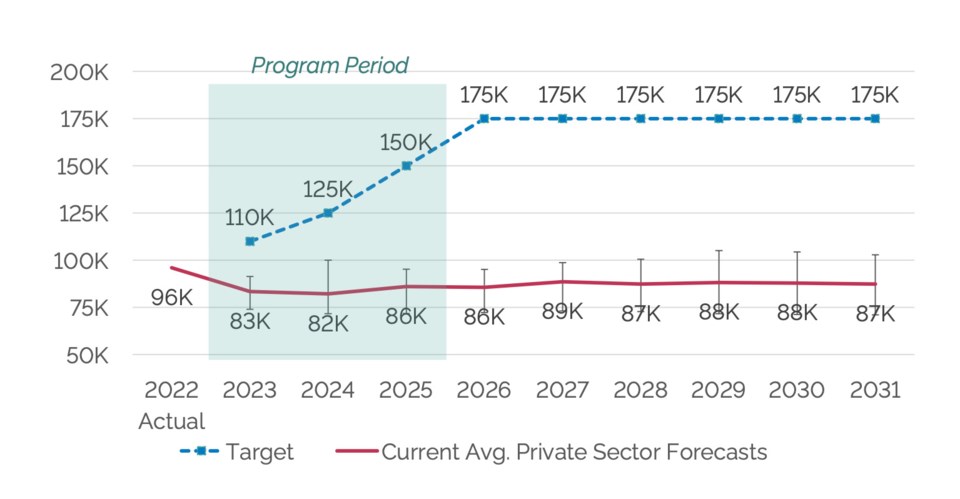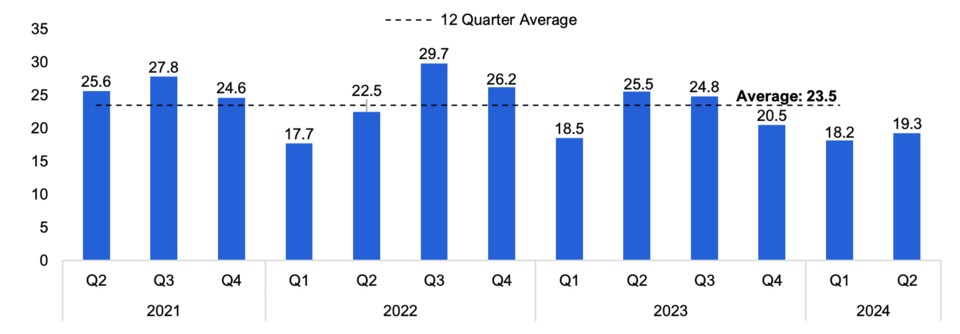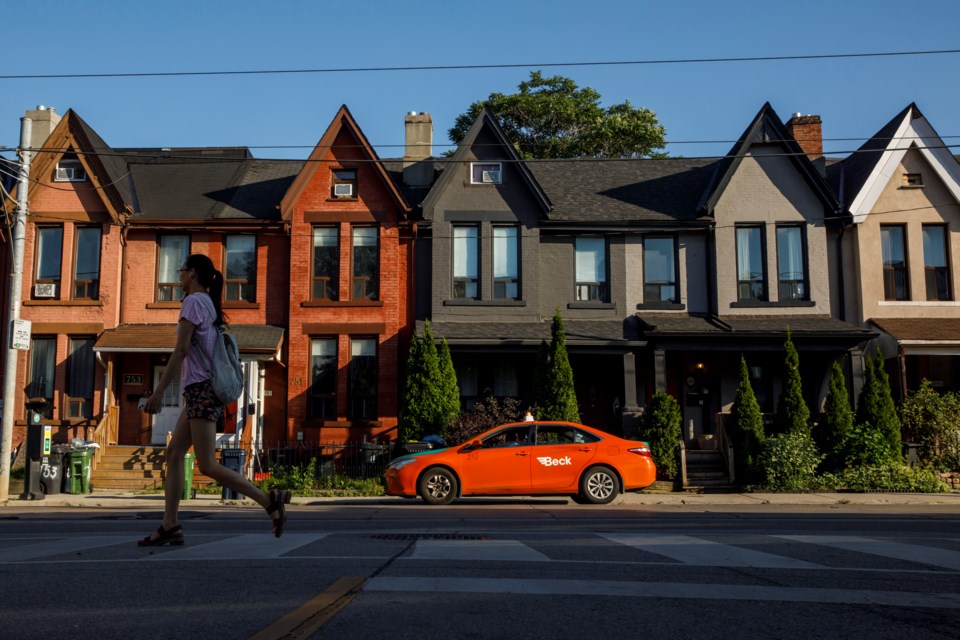Housing starts in Ontario have dropped significantly this year after most major municipalities missed their targets in 2023, putting the Ford government's goal of building 1.5 million homes by 2031 further in jeopardy.
Government documents obtained by The Trillium show that 31 of the 50 municipalities with housing targets imposed by the provincial government did not meet them in 2023, and even more are on track to miss them again this year.
Nineteen municipalities exceeded their targets last year and another seven were "on track," defined as meeting at least 80 per cent, but less than 100 per cent of their goals.
The other 24 communities were below 80 per cent, according to a transition binder prepared by the Ministry of Municipal Affairs and Housing for new Associate Housing Minister Vijay Thanigasalam in June, and received by this outlet via a freedom-of-information request.
A quarter of the way through 2024, just 12 of those 50 municipalities had hit 25 per cent or more of their yearly housing target. Another three were within three per cent, leaving 35 significantly off track.
Included in the binder is the stark admission that, according to private sector forecasts, Ontario is not only far behind its targets right now, but will be for the entirety of its 10-year plan.

The same graph was prepared for a "housing update" briefing to Premier Doug Ford in September 2023, according to documents obtained in a separate freedom of information request.
Housing starts in the province declined by 24.5 per cent this quarter compared to Q2 of last year, according to a Financial Accountability Office (FAO) report released Wednesday, covering Ontario's economy from January to June.
Ontario's 19,300 starts in the second quarter of this year represent exactly half the pace required for the government to build 1.5 million homes over 10 years, according to a previous FAO estimate.
Housing Minister Paul Calandra's office blamed high interest rates and Ottawa's "high tax policies," including carbon pricing.
"While our plan has delivered the highest housing starts Ontario has seen in over three decades, homebuilders across the province continue to face a challenging economic environment that is impacting the pace of new home construction," spokesperson Bianca Meta said in a statement.
Meta said the government is cutting red tape and streamlining construction approvals, and has put $3 billion into housing-enabling infrastructure like water systems (which many municipalities have said require upgrading to build more housing).
Liberal housing critic Adil Shamji said even the goal of 1.5 million homes isn't big enough.
"The reality is that they don't know what they're doing," he said.
In a statement, Green Leader Mike Schreiner called for more gentle density as "the cheapest and fastest way to build more homes in existing neighbourhoods — and yet our Premier has repeatedly railed against fourplexes and sided with NIMBYism."
Not everyone's lagging behind.
Pickering, Oakville, Sarnia and Welland are outliers, having already met more than half their yearly targets in Q1, according to the transition binder. Pickering is the furthest ahead with 963 starts — 89 per cent of its yearly target of 1,083.
Several municipalities had hit less than 5 per cent of their annual targets in the first quarter, including Burlington, Halton Hills, New Tecumseth and Haldimand County at 2 per cent, Aurora and Whitchurch-Stouffville at 3 per cent and Woodstock at 4 per cent.
Municipalities that don't hit their housing targets will miss out on their share of the province's Building Faster Fund. Mayors have complained in the past that they're being unfairly shut out of the cash, since they can't directly control housing starts — only housing approvals.
More than four-in-five of the starts this quarter were in multi-unit dwellings, compared to 19 per cent that were single detached homes, the FAO found.

As Ontario's population continues to boom and housing prices keep growing, home resales were also down 7.3 per cent from last quarter, the FAO reported.
The average price of a resold home was $862,900 this quarter, which is 2.7 per cent more than Q1 — but still much less than the peak of $1,020,300 in 2022 Q1.
Ontario's numbers and the FAO's will always differ because the watchdog relies on the Canada Mortgage and Housing Corporation data. The CMHC has a stricter definition of housing starts than the Ford government, which now includes long-term care home beds in its tally. It has also added additional residential units — converted basements, laneway suites, and the like — to its count as well.
Job numbers are up — but so is unemployment
The rest of the FAO's report showed strong economic trends in Q1, with "mixed results" in the second quarter.
As Finance Minister Peter Bethlenfalvy noted on Tuesday, GDP increased by 0.7 per cent in the first quarter, after several quarters of weak growth.
In Q2, jobs and wholesale trade are up, but retail and manufacturing sales are weaker, as are net exports — though the FAO still expects nominal GDP growth of 4.3 per cent for the whole calendar year.
While the province added 80,900 jobs in Q2, the unemployment rate has continued to grow for the fifth consecutive quarter, reaching 6.8 per cent, the FAO notes.
The youth unemployment rate (ages 15–24) reached 15.6 per cent, the highest since late 2013, excluding the pandemic.
Inflation looked relatively normal at 2.9 per cent in Q2. While it's up from 2.6 per cent in the first quarter, it's the first time since early 2021 that the province’s inflation rate was below 3 per cent for two straight quarters, the FAO said.
–With files from Charlie Pinkerton and Aidan Chamandy




